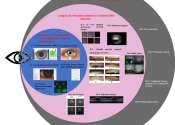Blinking eye-on-a-chip used for disease modeling and drug testing
People who spend eight or more hours a day staring at a computer screen may notice their eyes becoming tired or dry, and, if those conditions are severe enough, they may eventually develop dry eye disease (DED). DED is a ...
Aug 5, 2019
0
113









